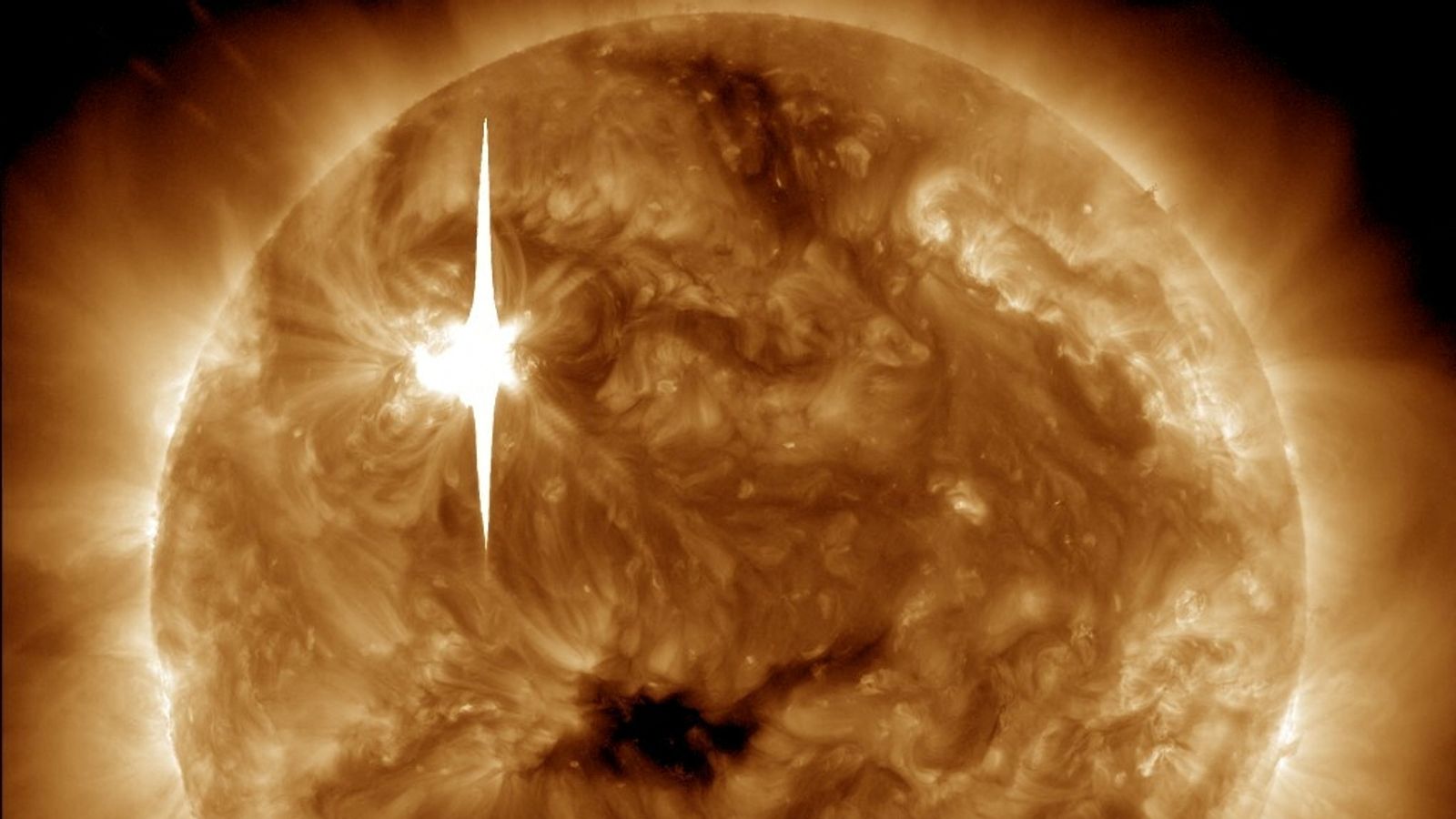Utilizing the infrared-sensitive instruments of the joint NASA, European Space Agency, and Canadian Space Agency James Webb Space Telescope, as well as observations from the Hubble Space Telescope, scientists recently collected the first spectroscopic observations of some of the oldest galaxies in the universe, some being born during the first one billion years of the universe.
These galaxies are thought to be a product of the reionization of the universe — the dark, star-less period of the universe wherein a dense fog of hydrogen gas covered the universe until the first stars began to ionize the hydrogen gas around them. As more and more stars began to ionize the gas, the universe gradually brightened.
For decades, astronomers have been trying to identify what objects emitted radiation that was powerful enough to clear the hydrogen fog, and Webb’s new observations are giving scientists insight into what these sources may be.
The observations were taken as part of the Ultradeep NIRSpec and NIRCam Observations before the Epoch of Reionization (UNCOVER) program and focused on imaging and performing spectroscopic observations on Abell 2744, also known as Pandora’s Cluster, which is a giant galaxy cluster located approximately four billion light-years from Earth in the constellation Sculptor. Due to the immense gravitational forces produced by the hundreds and thousands of galaxies within the cluster, the fabric of spacetime around the cluster is literally warped, and the cluster bends and distorts the light from objects within and around it — a phenomenon called gravitational lensing.
Two previous faint galaxies Webb discovered within Abell 2744 from gravitational lensing. (Credit: NASA/ESA/CSA/T. Treu (UCLA))
Scientists can use this gravitational lensing to research the potential sources of the universe’s reionization. The gravitational lens created by Abell 2744 bent enough light to allow scientists to discover and study eight extremely distant and faint galaxies that would have been undetectable to virtually all telescopes if it wasn’t for the gravitational lensing — even to Webb and its world-class suite of infrared instruments.
What’s more, the scientists also found that the eight distant galaxies produce extremely high amounts of ultraviolet (UV) light, producing four times more UV light than previously expected. Thus, most of the photons that are responsible for reionizing the universe likely came from these galaxies and others.
“This discovery unveils the crucial role played by ultra-faint galaxies in the early Universe’s evolution. They produce ionizing photons that transform neutral hydrogen into ionized plasma during cosmic reionization. It highlights the importance of understanding low-mass galaxies in shaping the Universe’s history,” said co-author Iryna Chemerynska of the Institut d’Astrophysique de Paris in France.
The scientists initially suspected lower amounts of UV radiation due to the small size of the galaxies. Coined “dwarf galaxies,” these galaxies are low in mass compared to full-size galaxies and, as such, were expected to emit less UV light. However, as mentioned, this isn’t the case.
“These cosmic powerhouses collectively emit more than enough energy to get the job done. Despite their tiny size, these low-mass galaxies are prolific producers of energetic radiation, and their abundance during this period is so substantial that their collective influence can transform the entire state of the Universe,” said lead author Hakim Atek of the Institut d’Astrophysique de Paris.
So, how did Atek et al. use Webb to research the galaxies?
First, the team combined Webb’s infrared images of Abell 2744 with images from the Hubble Space Telescope. These combined images allowed the team to identify and select extremely faint galaxy candidates that were predicted to have existed during the period of reionization.

An observation field layout of Webb’s observations of Abell 2744 for UNCOVER. (Credit: UNCOVER)
After making their selections, the team used Webb’s Near Infrared Spectrograph (NIRSpec) instrument to perform spectroscopy on the galaxy candidates. NIRSpec’s multi-shutter assembly was utilized to collect multiple spectra of the galaxies and was the first time scientists had reliably estimated just how many of these faint galaxies there are in the universe. NIRSpec’s results confirmed that these faint galaxies are indeed quite common, being the most abundant type of galaxies known to exist during the epoch of reionization. Furthermore, NIRSpec’s results showed — for the first time — the true ionizing power of the galaxies, which then allowed Atek et al. to determine that the galaxies are producing energetic radiation that is sufficient enough to ionize the hydrogen gas that blanketed the early universe.
“The incredible sensitivity of NIRSpec combined with the gravitational amplification provided by Abell 2744 enabled us to identify and study these galaxies from the first billion years of the Universe in detail, despite their being over 100 times fainter than our own Milky Way,” Hakim said.
In an upcoming Webb program, called GLIMPSE, scientists will use Webb to collect the most sensitive observations ever performed on the sky. They will do so by observing another galaxy cluster, called Abell S1063, and identify and characterize galaxies fainter than those identified within Abell 2744. If scientists indeed find galaxies within Abell S1063 that are similar to those found in Abell 2744, then the team will be able to confirm that these faint dwarf galaxies are largely responsible for the epoch of reionization.
🆕 Webb has discovered that dwarf galaxies lit up the early Universe! Read more: https://t.co/IblsbX0E3F or 🧵👇 pic.twitter.com/z4j7v3YvIG
— ESA Webb Telescope (@ESA_Webb) February 29, 2024
While the current results from Abell 2744 are helpful, these faint galaxies can exist in regions of space that are either more dense or less dense than the galaxies found in Abell 2744. This difference in density could interfere with the appearance of the faint galaxies, so confirming the similarity between the Abell S1063 and Abell 2744 galaxies will be beneficial to understanding the galaxies that affected the reionization of the universe.
More observations of galaxy clusters will be performed using Webb after GLIMPSE, and scientists hope that those results will continue to support their theory that these faint galaxies are responsible for the epoch of reionization. Additionally, the results from GLIMPSE and further observations will allow astronomers to investigate another period of the universe called the Cosmic Dawn. During this time, the universe was just a few million years old, and the first galaxies began to take shape and form.
Atek et al.’s study was recently published in the journal Nature.
(Lead image: Webb’s image of Abell 2744, or Pandora’s Cluster. Credit: NASA/ESA/CSA/I. Labbe (Swinburne University of Technology)/R. Bezanson (University of Pittsburgh)/A. Pagan (STScI))

Dr. Thomas Hughes is a UK-based scientist and science communicator who makes complex topics accessible to readers. His articles explore breakthroughs in various scientific disciplines, from space exploration to cutting-edge research.








